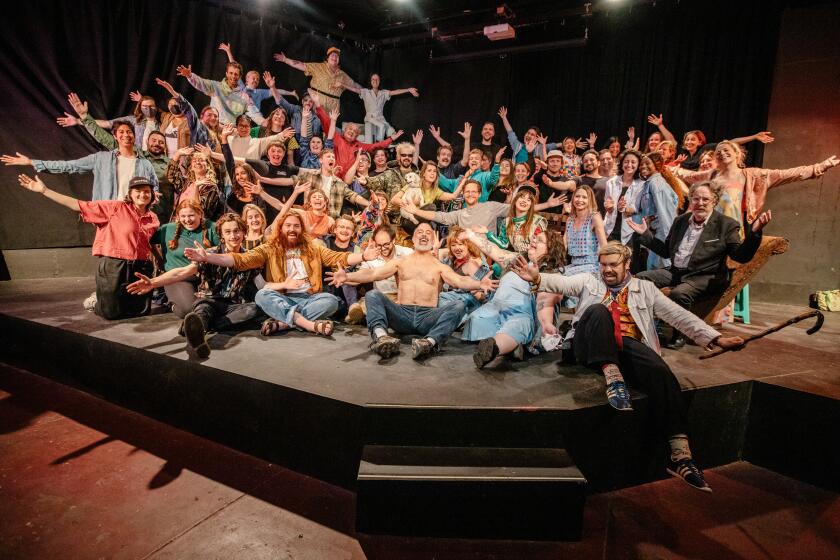Punk rock venue California Institute of Abnormal Arts shuts its doors after 30 years
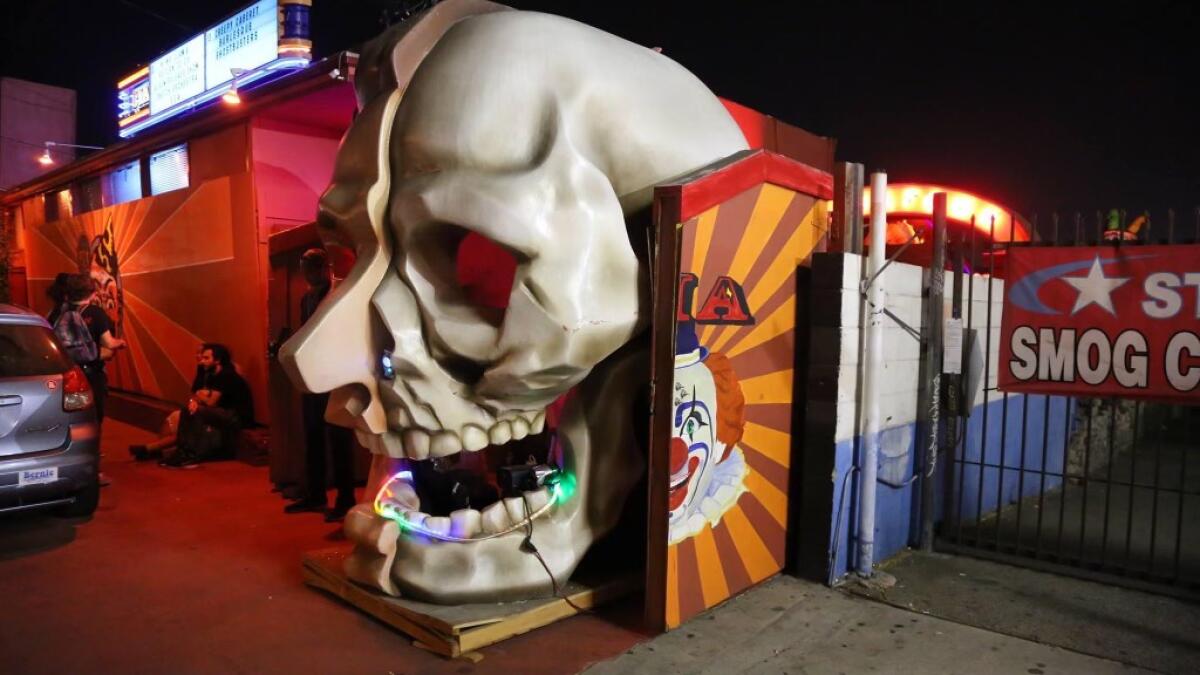
- Share via
L.A.’s crown jewel of hair-raising oddities came to a quiet, untimely end last month. The California Institute of Abnormal Arts in North Hollywood— CIA for short—closed its doors to the public on June 19, following a two-day sale of its entire inventory.
Over the past 30 years, the CIA maintained its status as the only live forum where on any given night, the stage performance was secondary to the venue itself. The 5,000-square-foot space was decorated front to back like a kaleidoscopic carnival and served primarily as a museum of ghastly oddities. Outside, a courtyard housed a full-size theater screen, showing one of an endless selection of clips from vintage B-horror movies.
The gallery of curiosities alone was well worth the price of admission on a Friday or Saturday night. Human fetuses in jars, a preserved severed arm, Fiji mermaids (that thing where the top half of a deceased infant monkey is sewn to the bottom half of a large fish.) The main attraction of the tour was a dead clown displayed in a transparent coffin. Yes, a real dead clown.
Lying with hands folded in a hermetically sealed glass case right in the walkway into the venue, was the body of French circus performer Achile Chatouilleu. According to Ripleys Believe it or Not, the last wish of Chatouilleu when he passed away over 100 years ago was for his corpse to be on display forever in his favorite clown makeup and Shriner outfit.
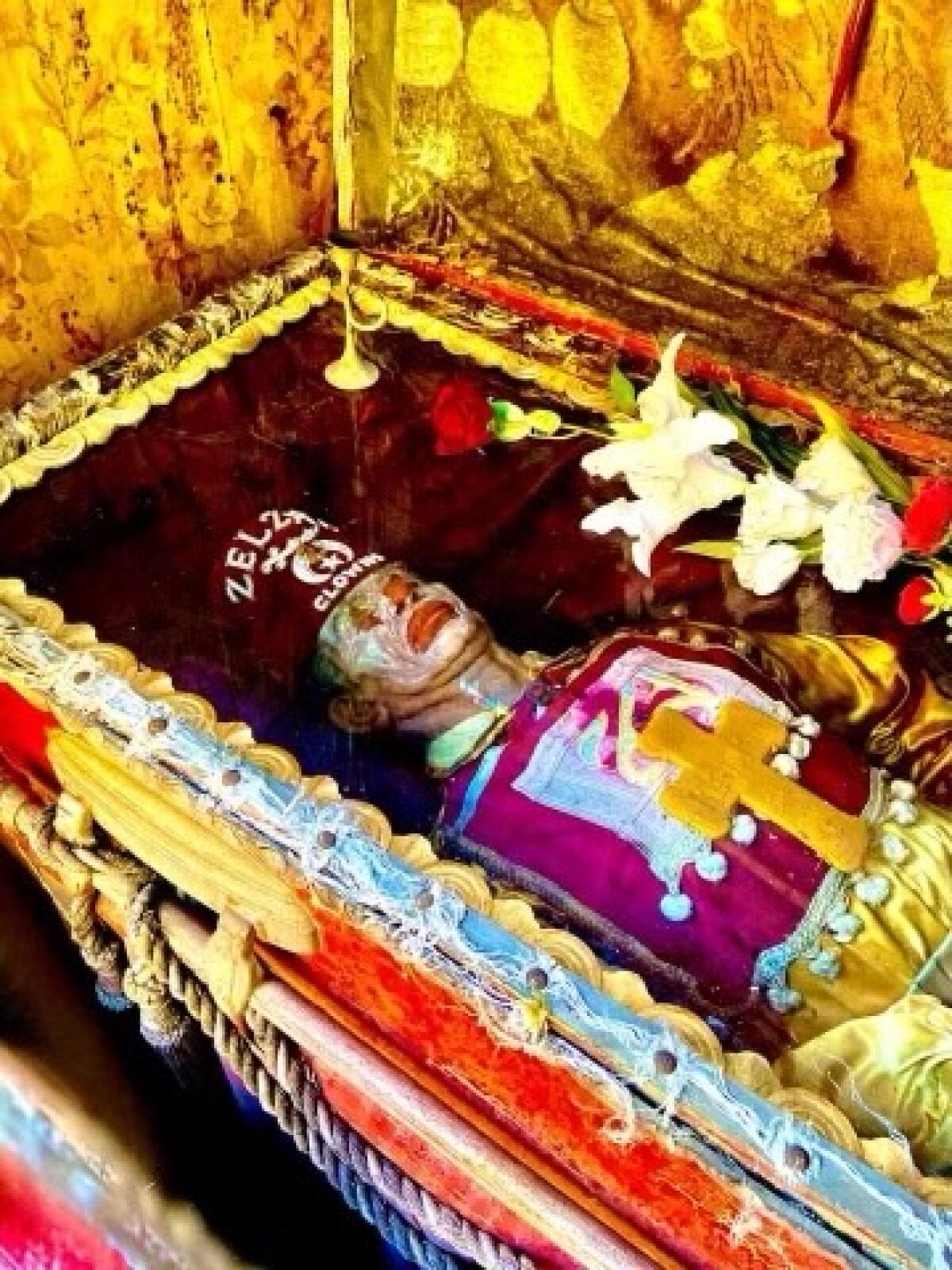
At the center of it all was the character who orchestrated this Technicolor madness. One with an unexpected twist — the horror hound of unconventionality, obsessed with serial killers and the grotesque is probably the nicest person you’ll ever meet.
Carl Crew, the ringleader of CIA, speaks with a charming smile and the natural ease of a born salesman who is finally ready to move on from his longtime calling of keeping the unique venue going.
“Frankly, it’s a huge weight off my shoulders!” he laughs.
Crew boasts one of the most interesting résumés in Hollywood. In the early ‘80s he worked as an embalmer in Marin County, where he would meet his future business partner, Robert Ferguson. The two quit embalming to open an antique shop in Haight-Ashbury.
In 1987, he starred in the cult classic, “Blood Diner,” and his IMDb page displays his semi-regular work as an actor, writer, and producer. But for the past 30 years, his true calling has been modern-day carnival barker, affectionately known by his moniker, “The Barnum of Burbank.”
Crew’s life was steeped in oddity from the very beginning. His uncle, Jerry Crew, is the man who brought the Bigfoot myth into American popular culture in 1958, “discovering” and making plaster molds of the now famous mud footprints in Del Norte County.
Born and raised in San Francisco, he developed his addiction to the limelight early, performing in a traveling repertory theater group at 9 years old.
“My father worked as a surgeon but my parents had a gospel quartet. My brother is Mark ‘Sterling’ Crew. He played Live Aid with Carlos Santana. I acted in a repertory group from age 9 until I was 20. It wasn’t national or anything, but we did a lot of on-the-road stuff, up and down California.”
“When I was a kid, I got to go to Playland, this creepy old amusement park by Ocean Beach. There was a funhouse with this mechanical woman, ‘Laffing Sal.’ Her laugh came through the speakers. She scared the crap out of you as a kid! But it changed my life. Then of course, my father sneaking me off to see R-rated movies on school nights implanted the love of film.”
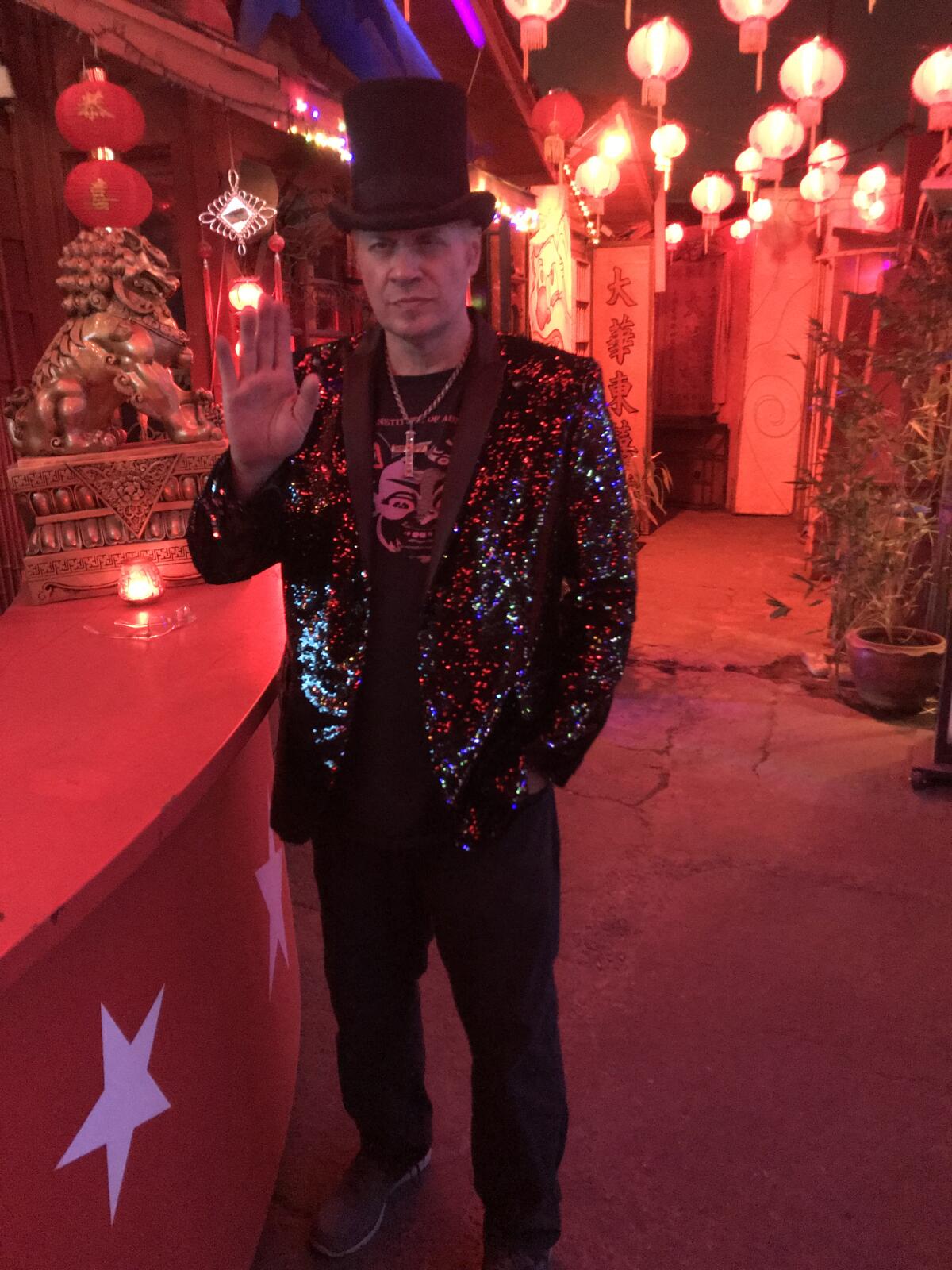
Carl got his first taste in dealing rarities when he opened the Haight-Ashbury antique shop with Ferguson.
“We sold slot machines, jukeboxes, advertising stuff, neon clocks. … I was a freak for neon! I would hunt all the shops for it. At one point we had two 6-foot-tall rubber Coca-Cola half bottles from the ‘39 World’s Fair in New York. The shop was really successful; we had a lot of private collectors we would regularly sell to.”
In his mid-20s, Crew decided he wanted to make movies, so he told Ferguson he was quitting the antique business and moved down to L.A.
“I used to collect and restore old cars and limousines, and production companies would rent them for films. After about six months, I started finding the casting director on sets and I would just stand by them and make friends. That’s how I got the role in ‘Blood Diner.’”
After producing and starring in his own passion projects, the now infamous, “The Secret Life: Jeffrey Dahmer,” and “Gross Out,” Crew needed a warehouse to manage sales from his recent films. He enlisted the help of his frequent collaborator. He says of Ferguson:
“This guy’s a brilliant artist. I do things for production, like let’s get it done! But when he does something he’s meticulous. Most of the interior design of CIA was him. He pieced together all the clips we played on the projector outside. He would edit together Herschell Gordon Lewis clips, weird vintage videos, etc. He’s the real unsung hero, I’m just the loudmouth, ha!”
After some convincing, Ferguson made the move to L.A. to open up shop with Crew.
“I called him up and told him I wanted to set up a distribution company. We got the place in ‘94. The rent was so cheap back then; it was easy to stay open. We just used it as a warehouse for the first couple years. We opened it as a club secretly in ‘96.”
“The entrance was a 20-foot rubber brick wall on hinges and a fake “Brady Bunch” fireplace, and the way they were set up — there was this big shadow between them and if you walked through, it looked like you were walking right into a wall. That was the secret entrance to the CIA. We kept it open for about a year.”
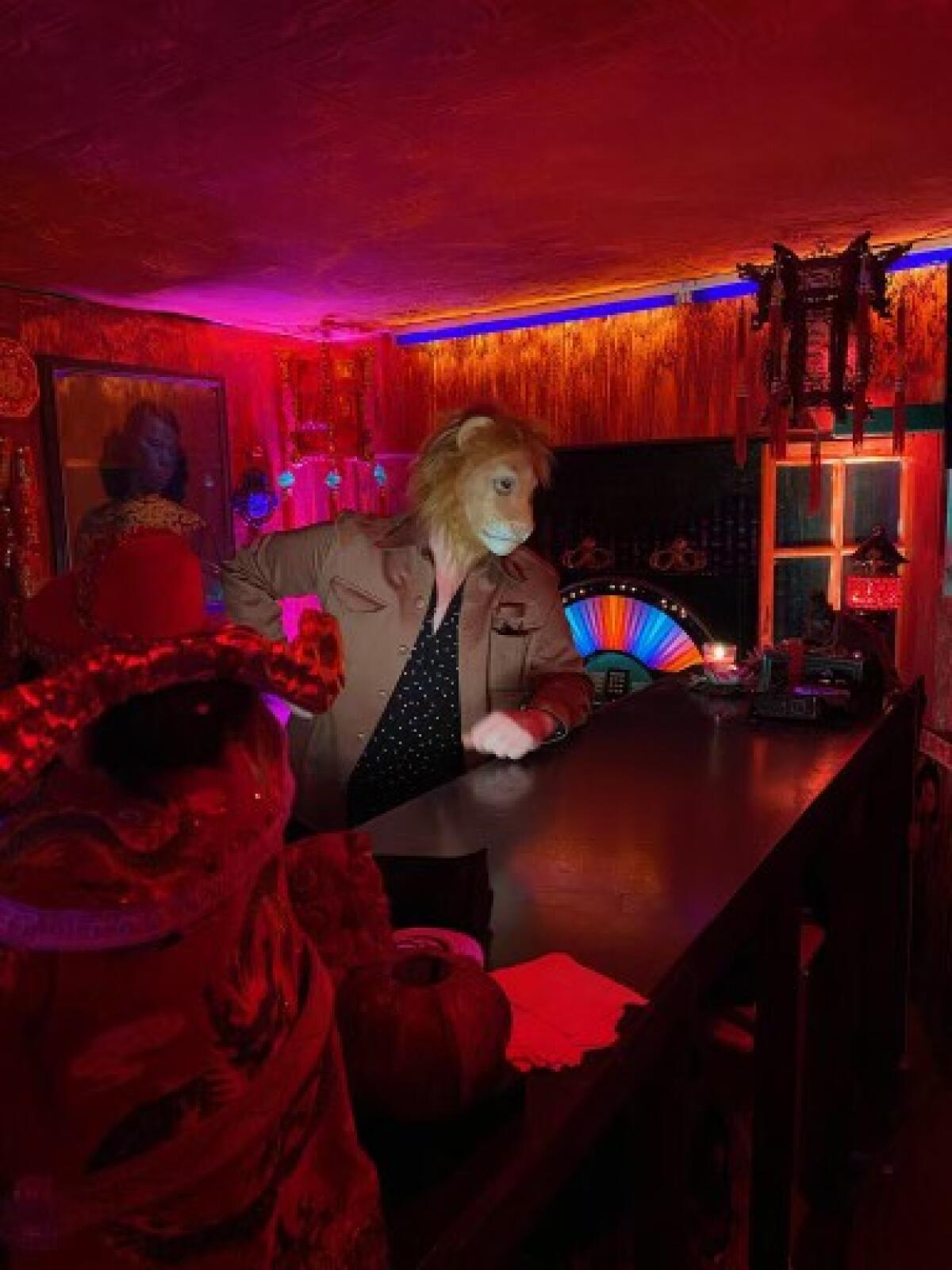
The venue got really popular until someone complained about it and the city came and got it shut down, Crew says. It took a couple years to get all the licenses, and CIA officially reopened in 2000.
In more recent years, the once covert entrance became significantly more conspicuous: A large wooden gate painted with circus stripes would swing open, revealing a 15-foot half face/half skull serving as the box office. Usually Crew himself would be standing inside the prop upon opening, dealing tickets to event-goers through the giant nasal cavity.
“That skull cost $10,000 to make! I got it from Nickelodeon,” Crew said. “It was from some show about going inside the body. It was astounding.”
Over the next 22 years, CIA remained the consummate haven in L.A. for the bizarre.
“We were doing mostly variety shows and freak shows. ‘Girly Freak Show’ with Slymenstra Hymen from Gwar, ‘Circus World’, ‘Squidling Brothers.’ ... We got the weirdest puppeteers we could get, including Scott Land, the lead puppeteer for ‘Team America,’” Crew said. “At one point the prop maker of ‘House of 1000 Corpses’ came down and hung out at our place regularly for a couple months to get the aesthetics for that movie. Then there were all kinds of punk shows. We loved bands like the Radioactive Chicken Heads. Fully costumed, totally crazy.”
But despite the zeal from L.A.’s most depraved underground, keeping the doors open was an exhausting effort.
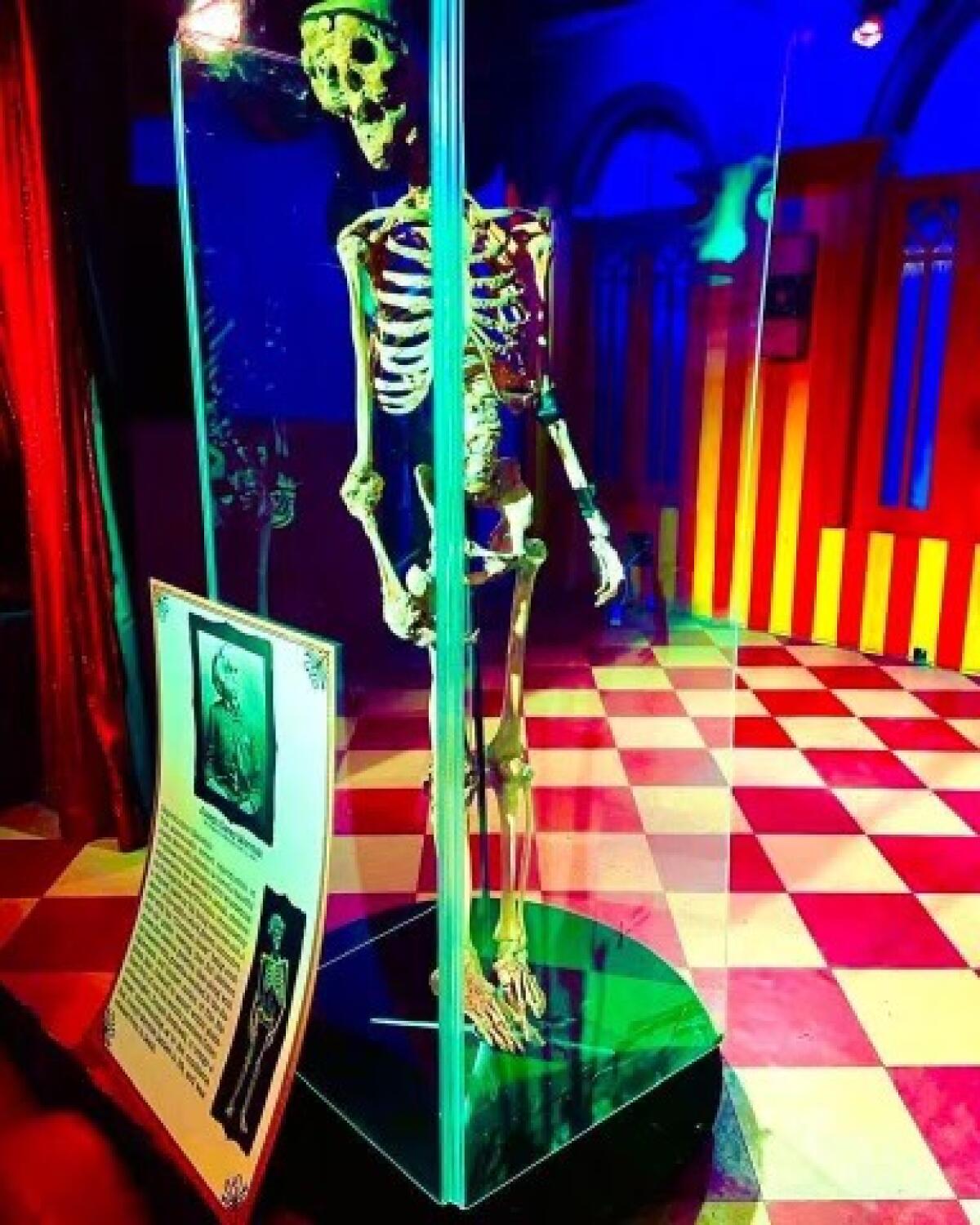
“When it was good, it was absolutely brilliant, but when it was bad, it was horrible. People have no idea what it’s like to own a club. People think you’re rich, but most of those years were a struggle. We tried everything to stay open.”
Finally, pandemic restrictions put the final nail in the brightly colored coffin. Now, piece by piece, what remains of CIA is quickly shuffled away as eager patrons make off with furniture, lights and sound equipment for meager fistfuls of cash. Shortly before the sale began, a private buyer purchased most of the collectible treasures, including the famous cadaver of Achile Chatouilleu. The new owner of the creepy cache requested to remain anonymous, but according to Crew, it was a very wealthy and eccentric personal friend.
The body of Alligator Boy was sold and relocated to David Copperfield’s museum in Las Vegas. All that remains at the end of the purge are a two-headed baby in a tank, and a plaster cast of the bones of Joseph Merrick, “the Elephant Man.”
Ultimately, the CIA in time will become like one of the various mysterious legends that took residency there. “Is it true that there used to be a carnivalesque house of horrors on Burbank Boulevard?” (The narrator grins and taps his nose).
More to Read
The biggest entertainment stories
Get our big stories about Hollywood, film, television, music, arts, culture and more right in your inbox as soon as they publish.
You may occasionally receive promotional content from the Los Angeles Times.

